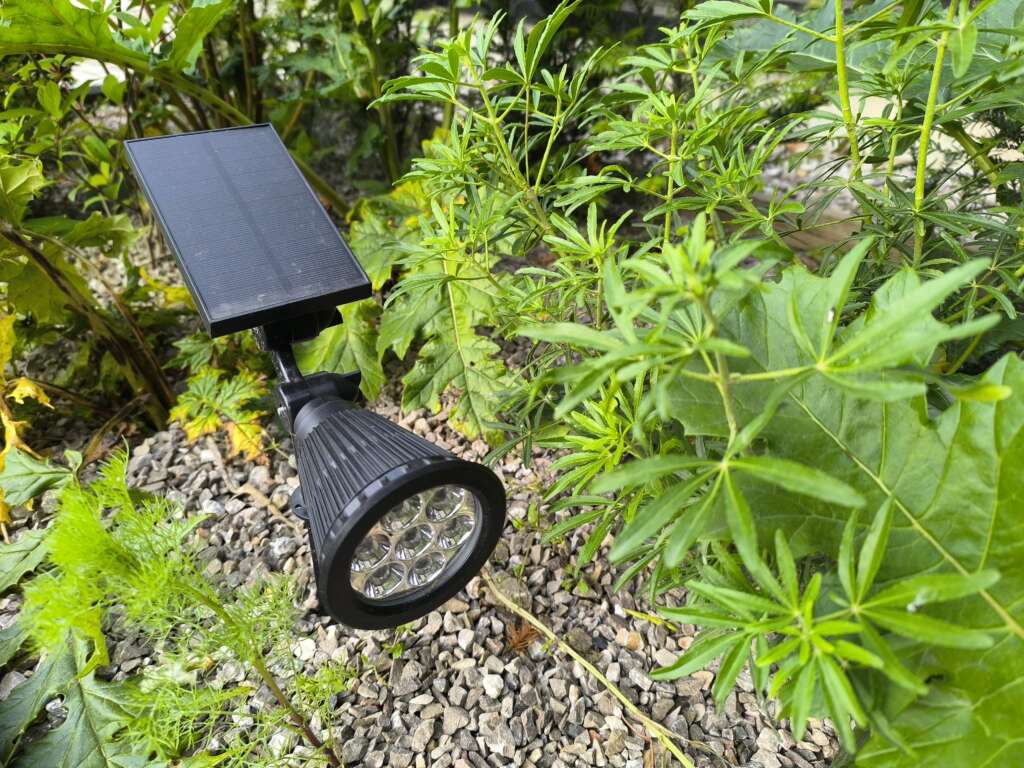Garden lighting is not only about enhancing your outdoor spaces, it also contributes to safety and the general atmosphere. Well designed, it can transform your garden into a welcoming and enchanting place after dark, a place that resembles you and consistent with the interior of your home.
Here are our 10 tips for optimizing the lighting in your garden.
1. Secure your garden at night
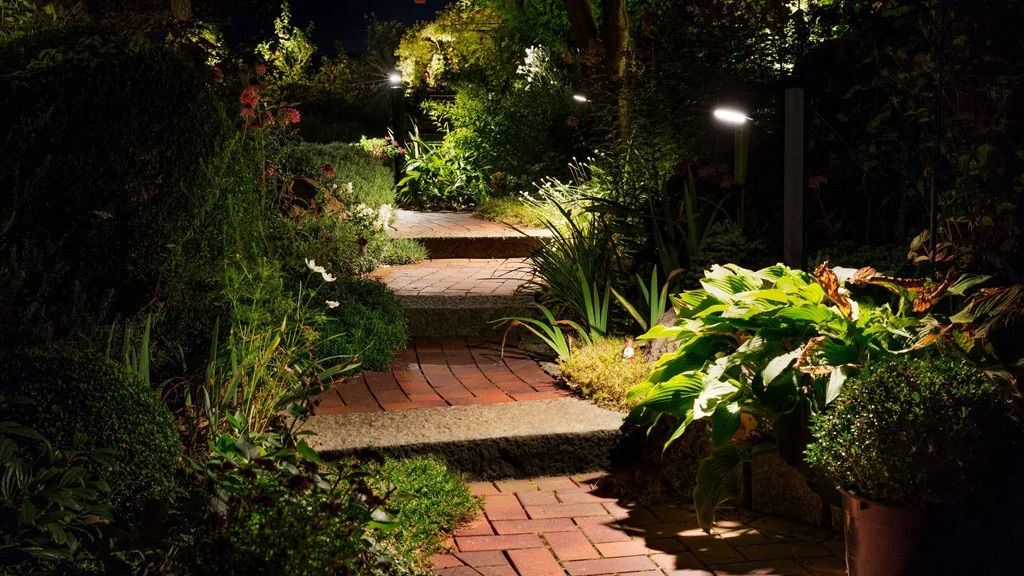
Securing your garden at night is essential, especially when visibility is limited. Walking through a garden at night can be dangerous if paths, stairs or obstacles are not properly lit. The risk of trips, falls or accidents increases considerably without adequate lighting.
To begin with, it is essential to mark out paths with discreet but effective lights. Light markers or recessed spotlights along paths help guide your steps safely, avoiding curbs and obstacles. This is particularly useful in areas where the ground is uneven or where tree roots may be in the way.
Also consider lighting stairs or paths with landings in your garden. Unlit steps are a major hazard, especially at night. Use LED strips, spotlights, recessed lights or wall lights to illuminate each step and prevent accidents. Proper stair lighting not only improves safety, but also adds a modern aesthetic touch to your garden.
Finally, make sure that passage areas, such as entrances and terraces, are well lit. Use spotlights or wall lights for these areas to ensure good visibility.
In summary, securing your garden at night with adequate lighting is the first tip to follow to avoid accidents and ensure a safe and pleasant environment. By clearly demarcating paths and lighting stairs, you create a welcoming and secure outdoor space, conducive to relaxation and conviviality.
2. Highlight trees by taking their specificities into account
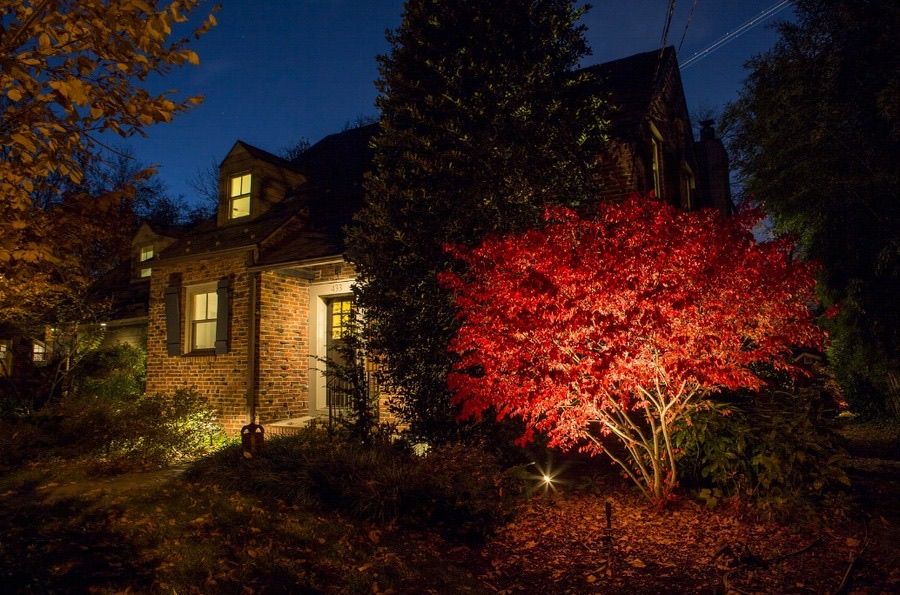
Tree lighting can transform your garden into a magical and enchanting space, especially if you take into account the specificities of each species. By adapting the lighting to the color, shape and structure of your trees, you can create spectacular effects and highlight their natural beauty.
For example, for trees with red leaves, such as the Japanese Maple (Acer palmatum), it is advisable to use red lights to accentuate the vibrant color of the foliage. This creates a warm and captivating atmosphere, while highlighting the tree’s natural nuances.
If you have very thin and slender trees, such as the Italian Cypress (Cupressus sempervirens), vertical lighting is ideal. Use spotlights that point upwards to accentuate the tree’s height and slenderness, creating an elegant and imposing silhouette. This draws the eye upwards and highlights the tree’s delicate structure.
For trees with interesting trunks and branches, such as the Olive (Olea europaea), spotlights placed at the base can illuminate the trunk’s texture and detail. This adds depth and visual interest, especially when there is a play of light and shadow.
To create a soft glow around trees and foliage, use stake lights. Strategically placed around the base of trees, these lights cast a subtle light that envelopes the foliage, creating a calming ambiance. Stake lights are particularly effective at highlighting the contours and textures of plants, adding an extra dimension to your nighttime garden.
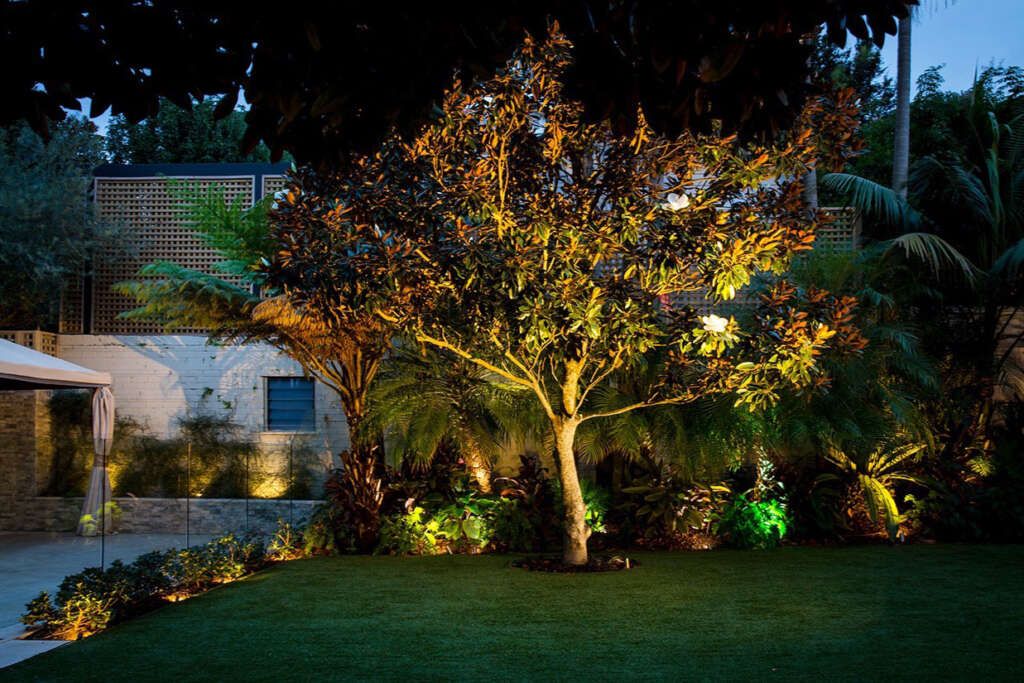
Other easily applicable examples: plants with shiny leaves, such as Holly, can be illuminated with spotlights to accentuate their natural glow. Plants with softer, velvety foliage, like Lavender, can be lit more diffusely to highlight their soothing texture.
If you have flower beds, playing with lighting colors can also be a great idea!
By using specific lighting techniques, you can not only enhance the aesthetics of your garden, but also create focal points that draw attention to the unique features of your trees and vegetation. Whether it’s color, shape, or texture, the right lighting can showcase each tree in a unique and dramatic way.
3. Play with colors and textures
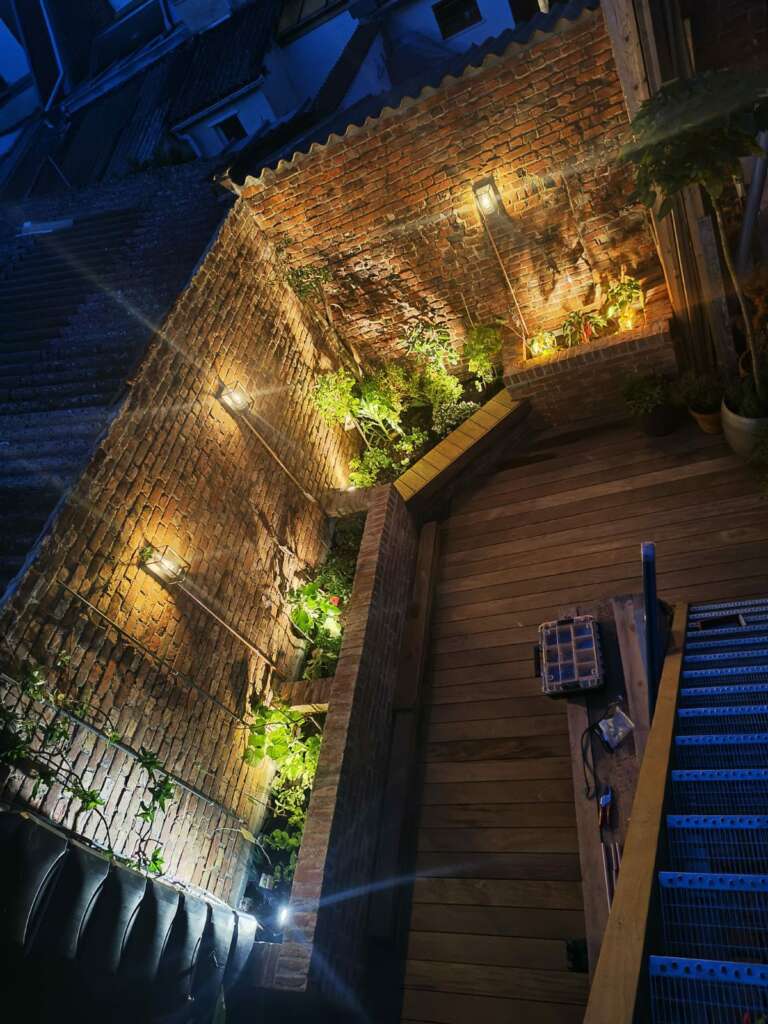
with wall lights Nordlux
By playing with colors and textures, you can personalize your outdoor space and highlight it by taking advantage of its specific features.
For example, low-angle lighting is an effective technique for highlighting the textures of tree trunks or stone walls. By placing lights close to the ground, you can create shadows and reflections that highlight the reliefs and architectural details, adding depth and dimension to your garden.
This also applies to old house courtyards, which often have old brick walls. You can highlight the rustic or even historic character of these walls with well-designed lighting. Opposite: lighting a courtyard of one of our customers, with Nordlux wall lights that we offer in our online store.
Feel free to experiment with lights of different intensities to create areas of light and shadow. This helps guide the eye and create focal points that draw attention to the most notable features of your garden.
4. Bring your personality to your garden lighting to make it unique
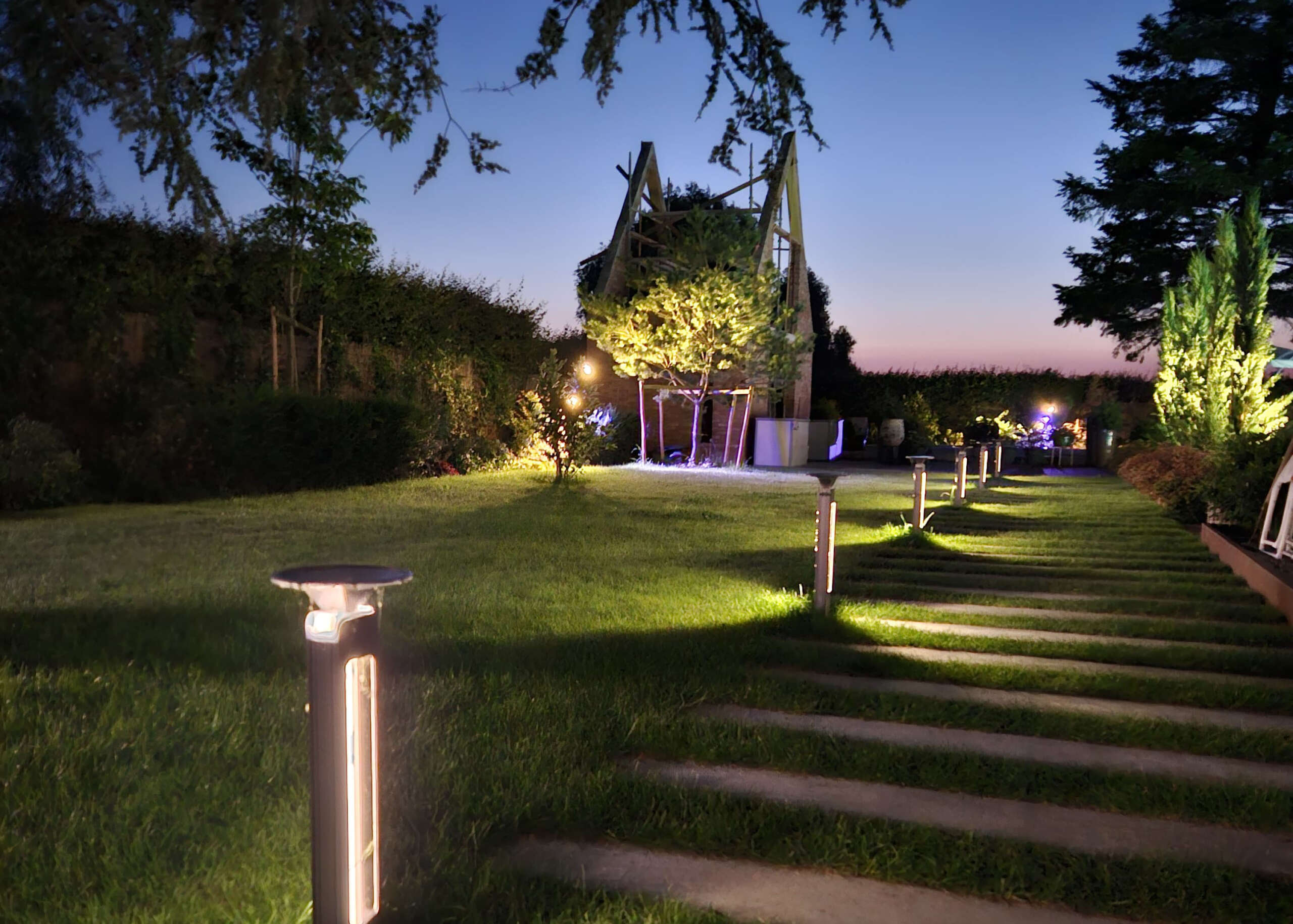
Garden lighting is a great opportunity to express your personality and create an outdoor space that reflects your unique style. By choosing lighting elements that match your tastes and your home’s decor, you can create a cohesive and inviting ambiance.
Use unique wall lights to add a personal touch to your garden. Choose lighting fixtures that complement the decorative or lighting elements in your home’s interior, creating a seamless transition between your indoor and outdoor spaces. For example, if you have vintage sconces in your living room, opt for similar models for your garden to maintain stylistic continuity.
Garden decorations can also help personalize your space. Metal figures, artistic lanterns or light sculptures can add character and a touch of whimsy to your garden. Make sure that these decorative elements are in harmony with the interior decoration of your home or reflect the personality you want to give your garden. For example, if you like rustic themes, wooden and wrought iron decorations can be ideal.
By incorporating decorative and luminous elements that reflect your personal taste, you transform your garden into an extension of your home. This not only improves the aesthetics of your outdoor space, but also creates a unique and welcoming atmosphere, perfect for relaxing and entertaining guests. Ultimately, your garden becomes a reflection of you, a place where your personality shines through every detail.
5. Anticipate and Stay Flexible
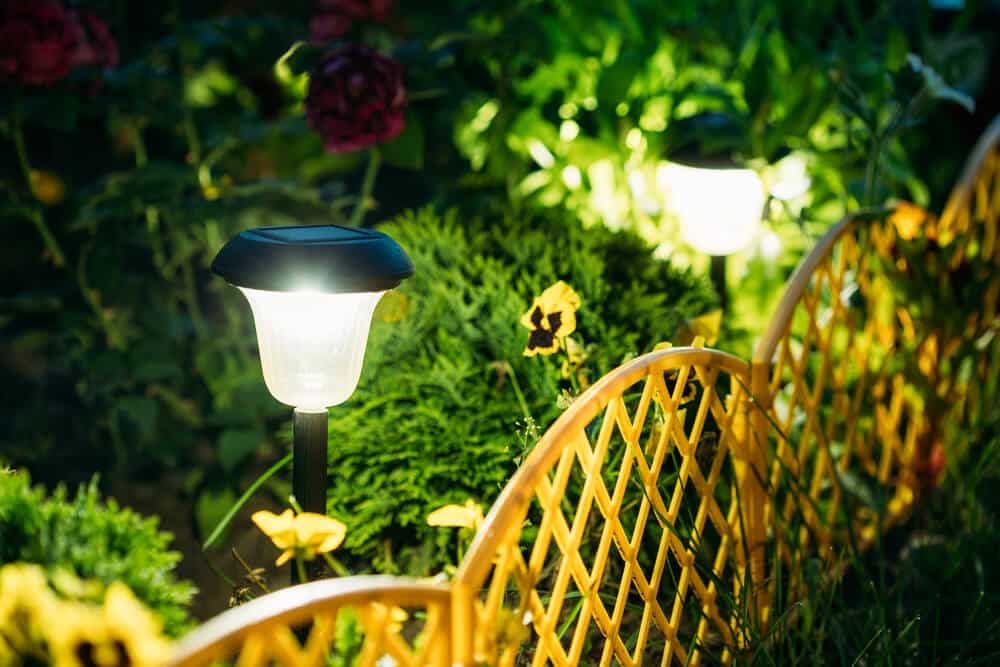
It is impossible to predict exactly what the future holds, but it is essential to plan for what you can. For example, a newly planted sapling may not need light right now, but consider installing a light fixture now to save yourself additional work in the future. You may also need to modify, relocate, or add fixtures to ensure your plants remain adequately lit as they grow. Think of your outdoor lighting as an evergreen project.
It’s also important toconsider seasonal changes and the different growth phases of your plants. For example, some plants may require more light during their flowering period. By planning ahead and staying flexible, you can adapt your lighting to the changing needs of your garden, creating a harmonious and always well-lit outdoor space.
6. Adopt Programmable Lights
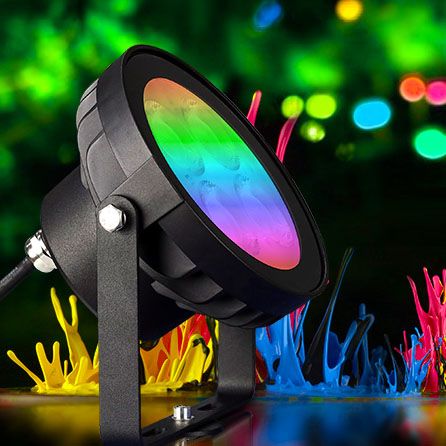
Programmable fixtures are agreat way to add flexibility and customization to your garden lighting. By using home automation solutions, you can easily manage and create lighting scenarios that are adapted to each event or time of year.
Home automation allows you to control your lights remotely via mobile applications or voice assistants, simplifying the management of your outdoor lighting. You can adjust the intensity, colors, and switching times in just a few clicks, making your garden always ready for any occasion or desired atmosphere.
Presence sensors are also a useful feature to integrate into your programmable lighting system. They can illuminate a path when someone walks along it, adding a dynamic and practical dimension to your garden. Imagine lights that gently twinkle as you walk through your garden, creating a magical and safe experience for you and your guests.
By adopting programmable lights, you add a layer of modernity and control to your garden lighting. This allows you to customize your outdoor space so that it is not only aesthetic, but also functional and adapted to your needs throughout the year.
For example, you can program your lights to display blue, white and red on July 14, or red hues to celebrate the Chinese New Year, adding a festive and unique touch to your garden.
We offer on our many connected and programmable lighting solutions.
7. Integrate reflective elements to maximize your lighting
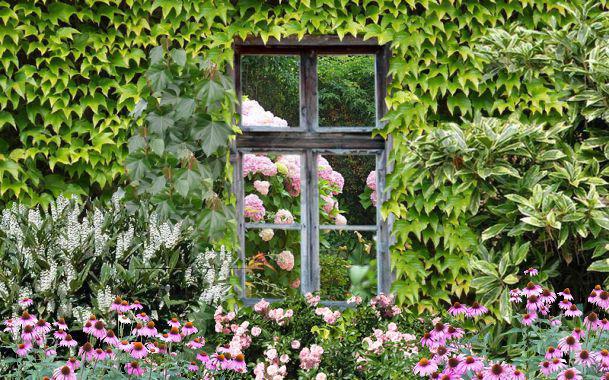
Maximizing the lighting in your garden can be done in a clever way by incorporating reflective elements. You can easily use mirrors, glass and other reflective surfaces to create amazing visual effects, whether during the day by reflecting sunlight, but especially at night with your artificial and colored lighting. For example, mirrors can be strategically placed to disperse natural light and give an impression of grandeur to your garden. By reflecting light, they create a magical atmosphere and add incomparable depth to your space.
Reflective surfaces are also ideal for directing natural light towards the more shaded areas of your garden. This allows you to create dynamic light effects and bring a sense of movement to your outdoor space. Using frosted glass, reflective mosaics or metallic materials, you can play with reflections and shadows to achieve unique visual effects. You can also imagine beautiful trompe-l’oeil effects, for example by recycling old windows!
By incorporating reflective elements, you not only add an aesthetic touch to your garden, but also improve its functionality. These surfaces can make smaller spaces appear larger and brighter, while directing light to specific plants or areas that you want to highlight. It is also a light source that does not consume any energy!
8. Ensure the Waterproofing of Garden Lights
To ensure the durability and safety of your outdoor lighting, it is essential to choose waterproof garden lights. Outdoor lighting fixtures are exposed to various natural elements such as rain, snow, and humidity, which can damage unprotected equipment.
Well-sealed lights not only prevent short circuits and electrical failures, but they also ensure reliable lighting all year round. To check for water resistance, look for luminaires with a high protection rating (IP), preferably IP65 or higher. This means that the luminaire is dust-resistant and protected against water jets from all directions.
Water resistance is particularly important for luminaires installed near ponds, fountains or in areas subject to water splashes. In addition, by choosing quality products, you will reduce the frequency of equipment replacement, thus contributing to more sustainable and responsible consumption.
By investing in waterproof garden lights, you protect your electrical installations and ensure constant and efficient lighting, whatever the weather. This allows you to enjoy your garden with complete peace of mind, while ensuring the safety and longevity of your outdoor lighting.
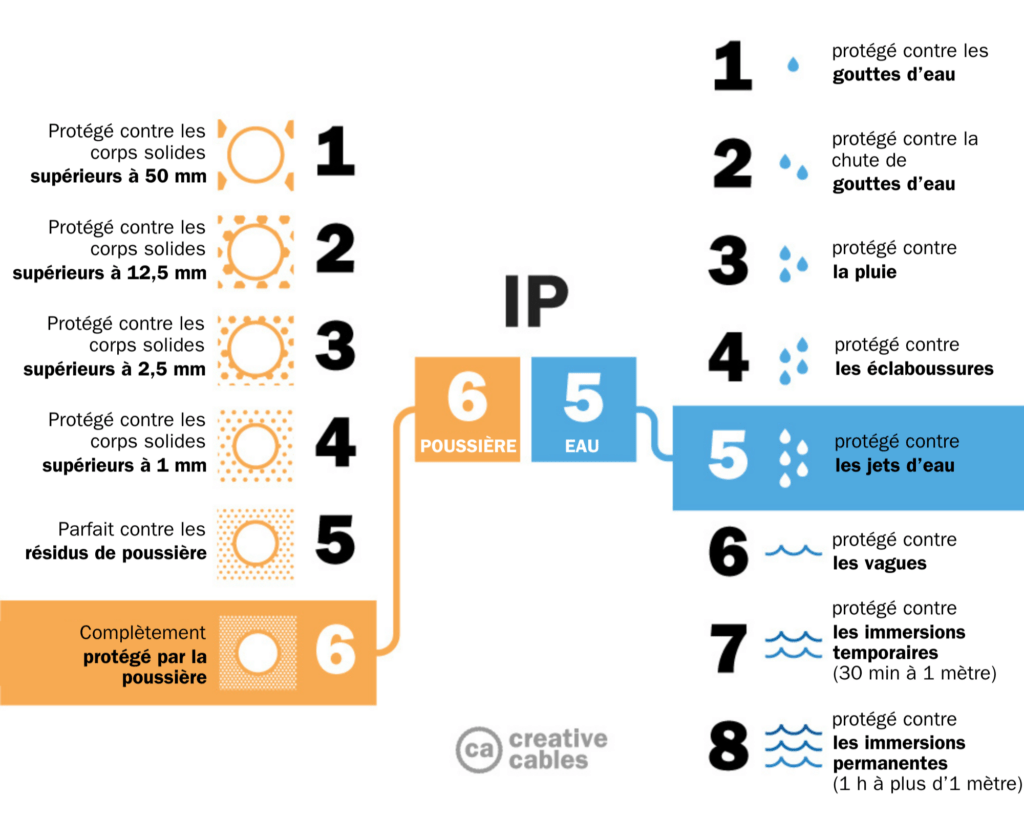
9. Use solar lighting in the right locations
Using solar lighting in your garden is an ecological and practical solution to illuminate your outdoor spaces. Placed in the right locations, solar lights can provide soft and constant light without increasing your energy consumption. Install them along paths to mark the way and ensure safety, or near relaxation areas to create a warm atmosphere.
Solar panels must be oriented so as to capture the maximum amount of sunlight during the day, thus ensuring efficient charging for optimal illumination at night. In addition to being cost-effective, solar lights are easy to install and can be moved around as needed, providing flexibility and convenience.
However, it is important to note that solar lighting is not suitable for all needs. If the units are in the shade for a large part of the day, they will not charge properly and will provide insufficient illumination. Even with optimal charging, you will not be able to obtain the same power as with lighting connected to a power source (plug), and you will not have the same options related to colors and connections to home automation platforms.
We offer many professional quality solar lighting solutions in our online store.
10. Light in a reasonable and environmentally friendly mannert
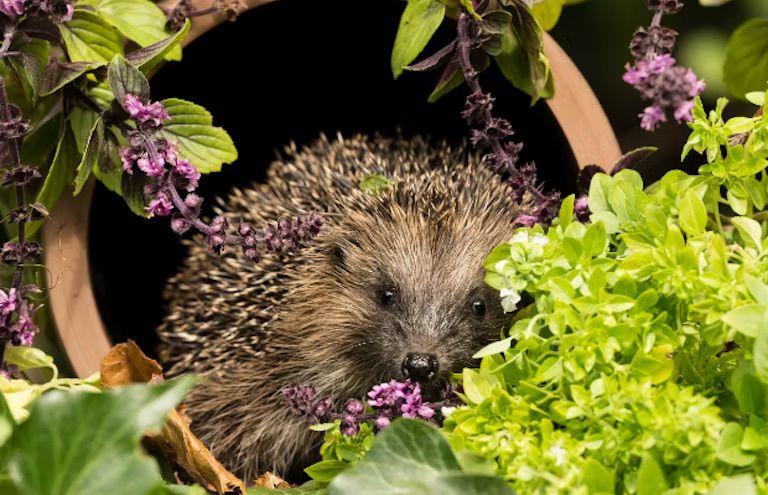
Limiting night lighting is crucial for ecological reasons related to the p erservation of biodiversity and energy waste. Garden lighting can kill many nocturnal insects, contributing to their decline and affecting the ecosystem. Moths, for example, are particularly vulnerable, and artificial light disrupts their life cycles and habitats.
Bats and other natural predators are attracted to lights, but a reduction in insects is detrimental to their survival. In addition, migratory birds are disoriented by the halos of light, affecting their routes and behavior.
Night lighting also consumes a large amount of energy. Solar lighting can greatly reduce energy consumption related to garden lighting, but as we have seen in other tips in this article, it is often necessary to use traditional power supplies for more powerful, colorful and connected lighting.
It is therefore essential to limit the lighting of your garden over time. We advise you to reserve energy-consuming decorative lighting for the right times (evenings with friends, family moments, etc.) and to keep the rest of the time only security-related lighting, which can be solar-powered only. You can also use presence detectors to only light up certain areas when there is traffic, or even cameras with Artificial Intelligence to differentiate between humans and animals.
By reducing the lighting in your garden and using more efficient solutions, you contribute to the protection of the nocturnal environment and the preservation of the species that depend on it.

